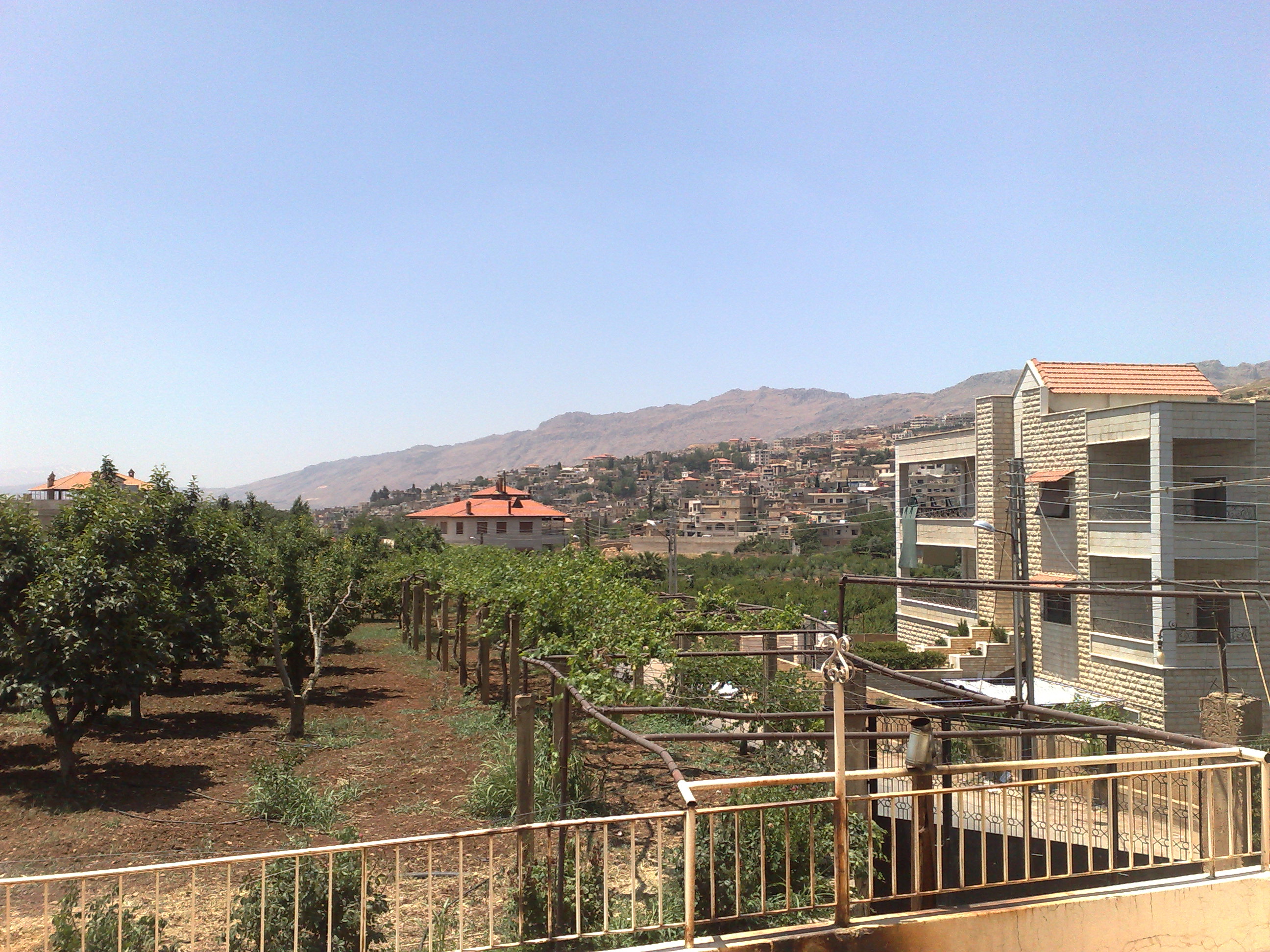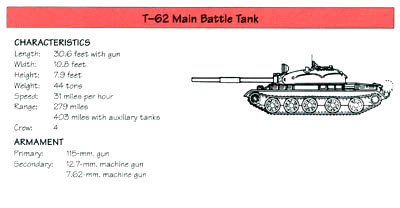|
1st Armoured Division (Syria)
The 1st Armoured Division is a division of the Syrian Arab Army. It was established before 1973. Yom Kippur War During the Syrian Army's assault on the Israeli held Golan Heights during the 1973 Yom Kippur War, the 1st Division was held in reserve until a breakthrough was made on the front line. On the evening of the first day of battle, 6 October, the division was sent forward to follow the success of the 5th Division in the southern part of the line. Dunstan writes that on the evening of the next day, the division commander, Colonel Tewfiq Juhni, had established a supply and administrative complex in the Khishniyah area. During the next two days, elements of the division fought along the Syrian salient in the southern Golan, taking part in the battles around Nafach, Khishniyah and the area around Al-‘Al. On 10 October, along with other elements of the Syrian Army, the last remnants of the division finally withdrew after hard fighting against the Israeli defenders. 19 ... [...More Info...] [...Related Items...] OR: [Wikipedia] [Google] [Baidu] |
Coat Of Arms Of Syria
The current coat of arms of Syria or coat of arms of the Syrian Arab Republic () was adopted in 1980, following the 1977 dissolution of the Federation of Arab Republics, whose coat of arms had until then been used by its constituent states. This emblem consist of the Hawk of Quraish supporting a shield bearing the national (in vertical form), and a scroll of the words "Syrian Arab Republic" ... [...More Info...] [...Related Items...] OR: [Wikipedia] [Google] [Baidu] |
Khishniyah
Khishniyah ( ar, الخشنية) is a depopulated village near Al-Rafid in Quneitra Governorate, Syria Syria ( ar, سُورِيَا or سُورِيَة, translit=Sūriyā), officially the Syrian Arab Republic ( ar, الجمهورية العربية السورية, al-Jumhūrīyah al-ʻArabīyah as-Sūrīyah), is a Western Asian country loc .... References Quneitra Governorate Quneitra District {{Syria-geo-stub ... [...More Info...] [...Related Items...] OR: [Wikipedia] [Google] [Baidu] |
Al-Kiswah
Al-Kiswah ( ar, الكسوة ' also spelled Kissoué/Kiswe) is a city in the Rif Dimashq Governorate, Syria. It is located approximately south of Damascus. It was the location of the 1303 Battle of Marj al-Saffar, and the childhood home of Adnan Awad. Administratively, Al-Kiswah belongs to Markaz Rif Dimashq district. It is one of the largest towns of the district by terms of population. History The name "al-Kiswah" means “the garment”. According to a tradition related by Yaqut al-Hamawi, this is because the king of Rum sent some messengers to demand tribute from a figure named King Ghassan; he had the messengers killed and then, at the site of al-Kiswah, he had their garments divided up. Yaqut and Ibn Battuta both described al-Kiswah as the first stage on the hajj route out of Damascus. Abu'l-Fida similarly described al-Kiswah as a stopping place on the road south of Damascus and added that between the two places, the road went through a “beautiful pass” called the ... [...More Info...] [...Related Items...] OR: [Wikipedia] [Google] [Baidu] |
Al-Zabadani
Al-Zabadani or Az-Zabadani ( ar, الزبداني, az-Zabadānī) is a city and popular hill station in southwestern Syria in the Rif Dimashq Governorate, close to the border with Lebanon. It is located in the center of a green valley surrounded by high mountains at an elevation of around 1,100 m. Its history is linked to the oldest capital in history, Damascus. It is located to the right of the international road linking Damascus to Beirut, in the middle of the distance between Damascus and Baalbek, in a mountain valley in the Syrian mountain range, where it rises between 1,150 and 1,250 meters above sea level. Zabadani is located in the semi-arid to semi-humid region, with an average rainfall of 500 mm per year. It is bordered by two mountain ranges, Mount Senir to the west and Jabal Al Shaqif to the east, and in the middle of it is a green carpet that forms the Zabadani Plain. According to the Syria Central Bureau of Statistics (CBS), in the 2004 census Al-Zabadani had a popu ... [...More Info...] [...Related Items...] OR: [Wikipedia] [Google] [Baidu] |
Damascus
)), is an adjective which means "spacious". , motto = , image_flag = Flag of Damascus.svg , image_seal = Emblem of Damascus.svg , seal_type = Seal , map_caption = , pushpin_map = Syria#Mediterranean east#Arab world#Asia , pushpin_label_position = right , pushpin_mapsize = , pushpin_map_caption = Location of Damascus within Syria , pushpin_relief = 1 , coordinates = , subdivision_type = Country , subdivision_name = , subdivision_type1 = Governorate , subdivision_name1 = Damascus Governorate, Capital City , government_footnotes = , government_type = , leader_title = Governor , leader_name = Mohammad Tariq Kreishati , parts_type = Municipalities , parts = 16 , established_title = , established_date ... [...More Info...] [...Related Items...] OR: [Wikipedia] [Google] [Baidu] |
Beirut
Beirut, french: Beyrouth is the capital and largest city of Lebanon. , Greater Beirut has a population of 2.5 million, which makes it the third-largest city in the Levant region. The city is situated on a peninsula at the midpoint of Lebanon's Mediterranean coast. Beirut has been inhabited for more than 5,000 years, and was one of Phoenicia's most prominent city states, making it one of the oldest cities in the world (see Berytus). The first historical mention of Beirut is found in the Amarna letters from the New Kingdom of Egypt, which date to the 14th century BC. Beirut is Lebanon's seat of government and plays a central role in the Lebanese economy, with many banks and corporations based in the city. Beirut is an important seaport for the country and region, and rated a Beta + World City by the Globalization and World Cities Research Network. Beirut was severely damaged by the Lebanese Civil War, the 2006 Lebanon War, and the 2020 massive explosion in the ... [...More Info...] [...Related Items...] OR: [Wikipedia] [Google] [Baidu] |
3rd Armoured Division (Syria)
The 3rd Armoured Division ( ar, االفرقة الثالثة المدرعة) is a formation of the Syrian Army responsible for securing the northern approach to Damascus. The division is based in a military complex near QutayfahJoseph HallidayThe Syrian Army: Doctrinal Order of Battle Institute for the Study of War, February 2013, p.9 and has traditionally been seen as one of the Assad Government's most reliable conventional Divisions. Structure The division is part of the Syrian Army's 3rd Corps, and is composed of 47th Armoured Brigade, the 65th Armoured Brigade, the 81st Armoured Brigade, the 21st Mechanized Brigade, and an unknown Artillery Regiment. As of 2011 the division was under the command of Maj. Gen. Naim Jasem Suleiman. The 65th Brigade was under the command of Brig. Gen. Jihad Mohamed Sultan. [...More Info...] [...Related Items...] OR: [Wikipedia] [Google] [Baidu] |
Battle Of Sultan Yacoub
The Battle of Sultan Yacoub was a battle between Syria and Israel during the 1982 Lebanon War, which occurred near the village of Sultan Yacoub in the Lebanese Bekaa, close to the borders with Syria. Background At the beginning of the invasion Israeli Brig. Gen. Giora Lev’s 90th Division passed through Marjayoun and took up positions around Kaukaba and Hasbaiya. From there it began to push the Syrian 76th and 91st Armored Brigade, of the 10th Division, north up the Bekaa Valley towards Joub Jannine. The Syrians made skillful use of their Gazelle helicopters to support the delaying action, firing HOT missiles into the long columns of Israeli vehicles stretched out along the roads. Israel countered with its own Cobra helicopters, used against both ground targets and the Gazelles. Battle On June 10 the Israeli 90th Division was rushed forward in order to gain as much ground as possible before the cease-fire came into effect. Late that night most of its 362nd Battalion as ... [...More Info...] [...Related Items...] OR: [Wikipedia] [Google] [Baidu] |
Battle Of Jezzine (1982)
The Battle of Jezzine was fought on June 8, 1982 between the Israeli Army and the Syrian Army in the Lebanese town of Jezzine. It was the first battle between Israel and Syria in the 1982 Lebanon War. It resulted in Israel capturing the town. Prelude Jezzine was considered strategically important due to its location near a junction in which one road passed through the town and led to the southern Beqaa Valley and the other led north to Jebel Baruk, passing west of Lake Qaraoun. Menachem Einan's division was driving down a road that ended in a fork west of Jezzine and had to pass through the town. Control of both the town and the junction would have given the IDF access to the southern Beqaa Valley from the west. The Syrian 424th Infantry Battalion was stationed in the town. On June 7, Syria detected an Israeli division advancing north and sent several commando companies and a tank battalion to ambush the Israelis on their way to Jezzine.Pollack (2002), p. 530. On the night of T ... [...More Info...] [...Related Items...] OR: [Wikipedia] [Google] [Baidu] |
Jezzine
Jezzine ( ''Jizzīn'') is a town in Lebanon, located from Sidon and south of Beirut. It is the capital of Jezzine District. Surrounded by mountain peaks, pine forests (like the Bkassine Pine Forest), and at an average altitude of 950 m (3,117 ft), it is the main summer resort and tourist destination of South Lebanon. The town is also well-known in Lebanon for its production of handmade, traditional cutlery and daggers with decorative inlays, artisanal wine, and the shrine of Our Lady of the Waterfall. Demography The inhabitants of Jezzine are mainly Lebanese Maronite Christians, Maronite and Lebanese Melkite Christians, Melkite Christianity in Lebanon, Christians. The town is located on the slopes of Tumat Niha and is surrounded with pine forests, vineyards and orchards. From the top of the huge rocky promontory known as al Shir, the visitor enjoys a panoramic view of the surrounding localities scattered in the midst of a fertile plain and protected by mountains. Cu ... [...More Info...] [...Related Items...] OR: [Wikipedia] [Google] [Baidu] |
Anti-tank
Anti-tank warfare originated from the need to develop technology and tactics to destroy tanks during World War I. Since the Triple Entente deployed the first tanks in 1916, the German Empire developed the first anti-tank weapons. The first developed anti-tank weapon was a scaled-up bolt-action rifle, the Mauser 1918 T-Gewehr, that fired a 13mm cartridge with a solid bullet that could penetrate the thin armor of tanks of the time and destroy the engine or ricochet inside, killing occupants. Because tanks represent an enemy's strong force projection on land, military strategists have incorporated anti-tank warfare into the doctrine of nearly every combat service since. The most predominant anti-tank weapons at the start of World War II in 1939 included the tank-mounted gun, anti-tank guns and anti-tank grenades used by the infantry, and ground-attack aircraft. Anti-tank warfare evolved rapidly during World War II, leading to the inclusion of infantry-portable weapons such a ... [...More Info...] [...Related Items...] OR: [Wikipedia] [Google] [Baidu] |
T-62
The T-62 is a Soviet Union, Soviet main battle tank that was first introduced in 1961. As a further development of the T-54/T-55, T-55 series, the T-62 retained many similar design elements of its predecessor including low profile and thick turret armour. In contrast with previous tanks, which were armed with rifled tank guns, the T-62 was the first production tank armed with a smoothbore tank gun that could fire Armour-piercing fin-stabilized discarding sabot, APFSDS rounds at higher velocities. While the T-62 became the standard tank in the Soviet arsenal, it did not fully replace the T-55 in export markets due to its higher manufacturing costs and maintenance requirements compared to its predecessor. Although it was followed by later models in successor states of the Soviet Union, the T-62 remained in reserve in the former USSR and in frontline use by other countries. Design features of the T-62 became standardized in subsequent Soviet and Russian mass-produced tanks. De ... [...More Info...] [...Related Items...] OR: [Wikipedia] [Google] [Baidu] |





